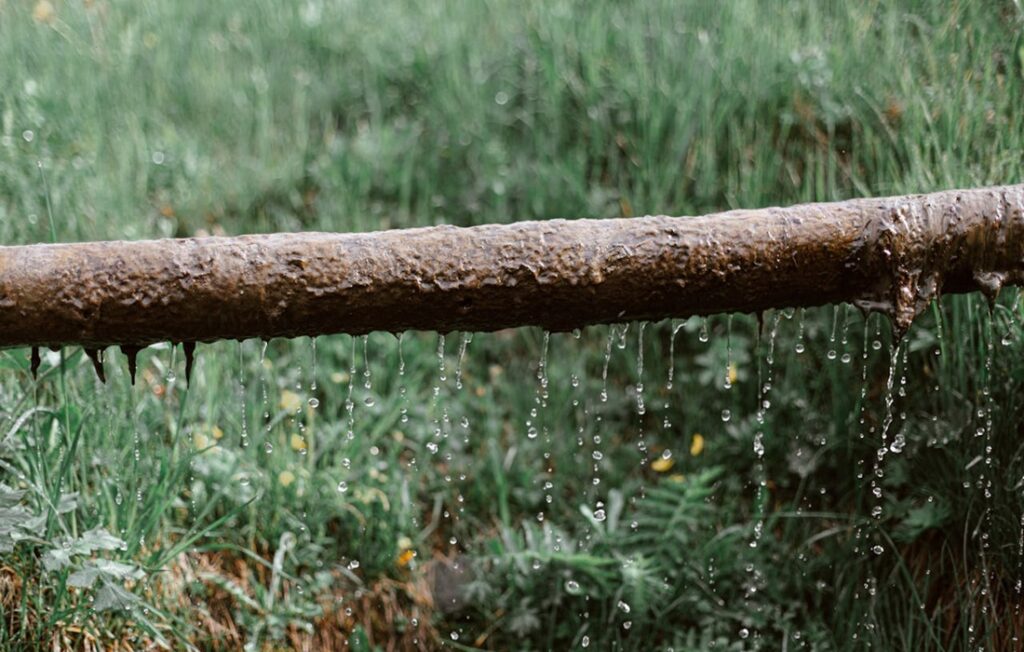America’s water infrastructure is massive, old, and in major need of overhaul. Depending on where you live in the country, you may be more aware of this than others. Over the past 50 years, U.S. federal spending on water infrastructure has decreased by more than 85%, and that lack of investment shows. From crumbling concrete and cracking pipes to sewage-stormwater overflows leading to contamination and health hazards, there’s a lot of work to be done.
Luckily, communities across the country have been making huge strides with sustainable (“green”) water infrastructure projects, promoting healthier environments and people. But to understand the wider implications of these successes and how we can amplify these efforts to benefit the whole of the United States, we must first address the basics of water infrastructure, our current reality, and begin to map out our next steps.
What Exactly Is Water Infrastructure?
We’re talking about water and we’re talking about infrastructure, but combined, so what does this look like? Think storm drains and sewer pipes, irrigation systems and hydropower. We’re referring to all the systems and mechanisms that move water from the source [either from surface water sources like lakes (60%) or groundwater aquifers (40%)] to your faucet, down your drains, and back again.
In the United States, this includes more than two million miles of pipes spread across 148,000 independent water systems—many of which operate at the local level. In addition, the U.S. has roughly 16,000 wastewater treatment plants to handle sewage and other hazardous water-based waste.
The Current State of U.S. Water Infrastructure
The United States has one of the highest rates of water consumption per capita (meaning per person) in the world. The biggest source? Power generation (a.k.a. hydropower), which accounts for roughly 41% of water withdrawals from U.S. sources. This is followed by agricultural irrigation at 37%, public consumption at 12%, and industries such as mining, gas, and oil at 6%. And unlike power generation which does not consume water (merely recycling it back to its original source), the remaining 59% of uses do, leading to significantly more water loss, evaporation, and contamination.
Lack of investment and updates, growing population sizes, as well as severe weather and climate change have all been adding additional stress to our already overburdened infrastructure. The result? Increasing consumer costs and public health hazards. The cost of water for the average U.S. home has increased 4% every year since 2012; a total cost increase of more than 51%. Meanwhile, deteriorating lead pipes and toxic river water led to the infamous water crisis in Flint, Michigan in 2014 and damage due to historic flooding led to severe water insecurity in Jackson, Mississippi which lasted weeks and affected more than 150,000 people.
So, where do we go from here?
Making the Shift to Sustainable Water Infrastructure
To understand how we’re going to make the transition to sustainable water infrastructure, we first need to identify the source (our sources) of the problem. Where does water pollution come from?
Water Pollution
Water pollution has many sources and can be direct (dumping waste into freshwater bodies) or indirect (rainwater hits an impervious surface, such as concrete, and combines with the pollutants on that surface (e.g., road salt, exhaust, oil, toxic chemicals) before running down storm drains or absorbing into soil.
Infrastructure breakdown can also lead to contamination, whether that’s from sewage overflow or water’s exposure to any number of harmful substances like lead, polyfluoroalkyl substances (PFAS), or bacteria. Hundreds of cities across the United States have combined sewer and stormwater systems. As a result, major storms can lead to sewage runoff—disastrous for both human and environmental health.
Sustainable water infrastructure aims to prevent unutilized wastewater runoff from occurring while simultaneously improving easy access to abundant clean water for all people. There is a wide array of management practices that can be implemented in any combination to help achieve this goal. These methods help capture rainfall by mimicking natural processes (i.e., the water cycle) and keep rainwater as a natural resource. In turn, this helps prevent flooding, decrease water usage (via existing water infrastructure), reduce pollution, and improve overall water quality.
Some of the most widely used practices include:
- Vegetated (“Green”) Rooftops – A green space covered in plant life that is located/contained on top of a human-made surface, such as a rooftop. This is a widespread practice in places like Europe where these nature-based rooftops are helping to decrease heat in urban areas, insulate buildings, and reduce electricity demand.
- Rainwater Harvesting – A process that captures rainwater for future use rather than allowing it to run off a structure or other watertight surfaces. This water can be held in rain barrels or cisterns (a large tank) and used for any number of purposes like irrigation or supplying household water.
- Bioswales & Rain Gardens – Similar in nature, bioswales and rain gardens aim to do the same thing: soak up and filter rain and water runoff. However, where and how these vegetated depressions are used is what distinguishes them from one another. Bioswales are specifically intended to capture water runoff from roadways—replacing concrete storm gutters and sewer drains with vegetated ditches that capture and filter stormwater. In comparison, rain gardens are generally formed on a natural slope and use native plants to hold and absorb water runoff from storms. (Bonus: they also help prevent mesquites from breeding in your yard!)
- Permeable Pavement – Porous asphalt, porous concrete, and interlocking pavers are all forms of permeable pavement. Permeable (meaning to allow liquids to pass through) asphalt and concrete is designed without using small sand particles, which is what creates the gaps in the material for water to flow through. While these materials are not ideal for high-traffic or high-speed roads, they’re great for smaller local streets, parking lots, sidewalks, and biking trails.
- Green Streets, Roadside Planting & Urban Tree Canopy – While technically three distinct types of practices, green streets, roadside planting, and the improvement of Urban Tree Canopy (UTC) are interconnected in so many ways we decided to group them together. The goal? To increase green (natural) elements along roads and sidewalks to decrease water runoff and increase other benefits such as reducing temperature, controlling dust, improving carbon absorption, providing a wind break, and increasing animal habitat.
The Cost: Gray vs. Green
Gray infrastructure—what we recognize as typical infrastructure today—is significantly more expensive than its green (a.k.a. sustainable) counterpart. How is this possible? Because pollution remediation and water contamination are expensive to resolve and bad for our health. Green infrastructure is more cost effective and prevents water runoff at the source, preventing future health, environmental, and infrastructure hazards in the future. The result? A much more affordable long-term solution.




